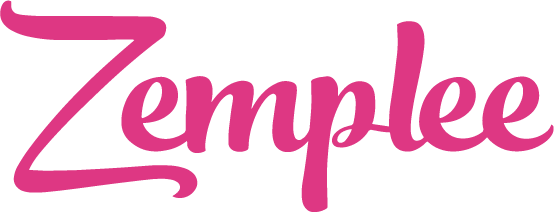Aging used to carry a particular fear of frailty, isolation, and losing independence. But here in 2025, that picture is changing faster than many of us imagined. The secret behind this change? Technology.
What was once seen as a luxury or even a novelty has now become a lifeline for millions of older adults worldwide. Senior care technology is no longer about fancy gadgets — it’s about improving lives, strengthening connections, and giving people the freedom to age on their terms.
From senior wellness monitoring tools that track health in real-time to senior independence technology that enables people to live safely at home, innovation is transforming how we think about aging. And as someone interested in this fast-growing industry — whether you’re a healthcare provider, tech entrepreneur, marketer, or family caregiver — understanding these shifts is critical.
Let’s take a deep dive into how technology is revolutionizing senior care in 2025, including the innovations shaping elder care, the breakthrough products enhancing the lives of older adults, and the significant trends to watch in this space.
How Technology is Revolutionizing Senior Care in 2025
It’s easy to think of senior care as something reserved for nursing homes or assisted living centers. But the reality today is that most older adults want to age in place — that is, stay in their own homes as long as possible.
That’s where senior care technology comes in, providing solutions that address common challenges like mobility issues, chronic illnesses, medication management, and social isolation. What’s exciting is that these technologies aren’t just for medical emergencies — they’re proactively improving daily life.
Here’s why this revolution matters:
- The numbers are staggering: by 2025, more than one in six people worldwide will be over 65. This means the demand for senior care services is exploding.
- The caregiver gap is growing: Families and healthcare systems are struggling to meet seniors’ needs, especially as more adults juggle careers and caregiving. Technology helps fill this gap.
- Older adults are more tech-savvy: Today’s seniors aren’t intimidated by technology. Many use smartphones, tablets, and wearables, making it easier to introduce new tools that support their health and independence.
- Investment is pouring in: Both startups and established companies are racing to bring cutting-edge products to market, from AI-powered health tools to smart home systems.
In short, we’re seeing a shift from reactive care — responding to crises — to proactive care that prevents problems before they start. And that’s a game changer.
The Future of Aging: Innovations Shaping Elder Care
What does the future hold for seniors and their families? Let’s look at the technologies making waves.
Senior Wellness Monitoring
Gone are the days when families had to call or visit their aging parents constantly to check on them. With senior wellness monitoring, families can now have peace of mind without being intrusive.
Wearable devices, such as smartwatches or fitness trackers, track vital signs, including heart rate, blood pressure, sleep patterns, and activity levels. But in 2025, it goes far beyond that. Devices can now detect early warning signs of illness or increased risk of falls. For example, if Dad’s movement slows or Mom’s sleep becomes restless, the system sends an alert to family members or caregivers.
From a business standpoint, companies developing these tools are tapping into a massive market: families seeking affordable solutions and healthcare providers aiming to reduce hospital readmissions.
Senior Independence Technology
Perhaps the most heartwarming development in this space is the rise of senior independence technology.
Smart home systems automatically adjust lighting to reduce fall risks, set the thermostat for comfort, and even lock doors at night for security. Voice-activated assistants help seniors remember to take medications, track appointments, or even order groceries.
And let’s not forget the arrival of robotic companions — machines that help with daily tasks or offer social interaction for those who live alone. While some feared that robots would replace human care, the opposite has happened: these tools free up caregivers to focus on emotional connection rather than routine chores.
Marketers and sales teams have a golden opportunity here: create products that feel less like medical devices and more like lifestyle enhancers.
Senior Health Monitoring
Chronic illnesses like diabetes, hypertension, and arthritis affect millions of seniors, and managing them can feel overwhelming. Senior health monitoring tools are changing that dynamic.
Today, seniors can wear connected devices that monitor blood sugar levels, heart function, or oxygen saturation — all without setting foot in a doctor’s office. These devices send real-time data to healthcare teams, enabling faster interventions when abnormalities are detected.
For healthcare providers, insurers, and tech companies, the benefits are clear: improved health outcomes, lower costs, and happier patients. And for families? It’s the priceless gift of peace of mind.
Breakthrough Technologies Improving Life for Seniors
Let’s dig deeper into some of the technologies driving these changes.
Artificial Intelligence and Machine Learning
AI has moved from the lab into seniors’ living rooms. Today, AI systems help detect changes in walking patterns, eating habits, or speech that could signal a health issue.
Apps utilize machine learning to remind seniors to take their medications, track cognitive changes, or even play memory games to keep their brains sharp. This means problems get caught early, sometimes before seniors or their families even notice.
Telemedicine and Virtual Care
The COVID-19 pandemic accelerated the adoption of telemedicine, but by 2025, virtual care will have matured into an indispensable tool for elder care.
Today’s platforms are designed with seniors in mind: larger fonts, simple interfaces, and clear audio. Seniors can consult with doctors, physical therapists, or mental health professionals from the comfort of their homes. This reduces stress, improves adherence to care plans, and reduces the need for unnecessary clinic visits.
Smart Mobility Devices
Mobility is key to independence. Today’s walkers, wheelchairs, and scooters are equipped with GPS tracking, obstacle detection, and even self-parking functions.
These smart mobility devices enable seniors to navigate their environments with confidence, whether indoors or outdoors. For caregivers, knowing a loved one’s location or safety status brings enormous relief.
Cognitive Assistance Tools
For seniors facing cognitive decline, technology offers new hope. Digital memory aids, interactive games, and AI-driven conversation bots can support mental stimulation and ease feelings of loneliness. These tools don’t replace human interaction, but they enrich it, offering companionship when family or friends aren’t immediately available.
Transformative Trends in Senior Care Technology
Beyond the devices themselves, several big-picture trends are reshaping the industry.
Proactive Care
We’re moving away from a “fix it when it’s broken” mindset toward a preventive care approach. Technology helps identify minor health issues before they become big problems, saving money and improving quality of life.
Personalization at Scale
No two seniors are alike. Technology allows for deeply personalized care, from tailoring fitness programs to tracking mood and emotional well-being. For businesses, this opens up new models of service delivery and customer engagement.
Human-Tech Collaboration
There has been a lot of concern that technology will replace human caregivers, but what we’re seeing is a beautiful partnership between people and machines. Technology handles repetitive tasks, while humans provide the warmth, empathy, and companionship that only people can give.
Integration and Interoperability
The most successful solutions are those that play well with others — platforms that connect wearables, apps, health records, and home systems into a seamless experience. For companies, the future is not about creating a single product, but about building ecosystems.
Aging and Innovation: What 2025 Means for Elder Care
For businesses, marketers, and service providers, the rise of senior care technology represents an enormous opportunity. But it also comes with responsibility.
Here’s what you need to know:
- The market is booming: Seniors and their families are spending billions on health, wellness, and independence solutions. There’s space here for startups, big brands, healthcare systems, and retailers alike.
- Trust matters: Seniors and their families care deeply about privacy, security, and reliability. Brands that prioritize clear communication, ethical practices, and excellent customer service will stand out.
- Ecosystems win: Consumers are tired of juggling multiple devices that don’t sync. Companies that offer integrated, user-friendly solutions will likely dominate.
- Purpose-driven marketing wins hearts: This isn’t just about selling gadgets — it’s about improving lives. Brands that communicate this purpose will build loyalty and long-term relationships.
Practical Tips for Businesses Entering the Senior Care Tech Market
If you’re thinking of jumping into this space, here’s some real-world advice:
- Know your audience. Spend time talking with seniors and their families. Understand their pain points, hopes, and daily routines.
- Simplify everything. From product design to marketing language, keep it simple and accessible. Avoid jargon.
- Build trust. Share testimonials, case studies, and transparent pricing. Offer excellent post-sale support.
- Partner wisely. Collaborate with healthcare providers, senior communities, and insurers to expand your reach and services.
- Educate your market. Don’t assume customers know how to use your product — offer training, demos, and a friendly onboarding process.
Final Thoughts: A New Era of Aging
We stand at the edge of a new era — one where aging doesn’t have to mean losing independence or quality of life. Senior care technology is no longer a futuristic concept; it’s here, it’s growing, and it’s reshaping the world.
For seniors, this means the chance to live with greater dignity, freedom, and joy. For families, it brings comfort and a sense of connection. And for businesses, it offers a meaningful opportunity to create products and services that truly matter.
As we look ahead, let’s remember: technology is only as powerful as the purpose behind it. In the world of senior care, that purpose is clear: to help people live well, regardless of their age.
Want to find out more? Visit us at Zemplee!


